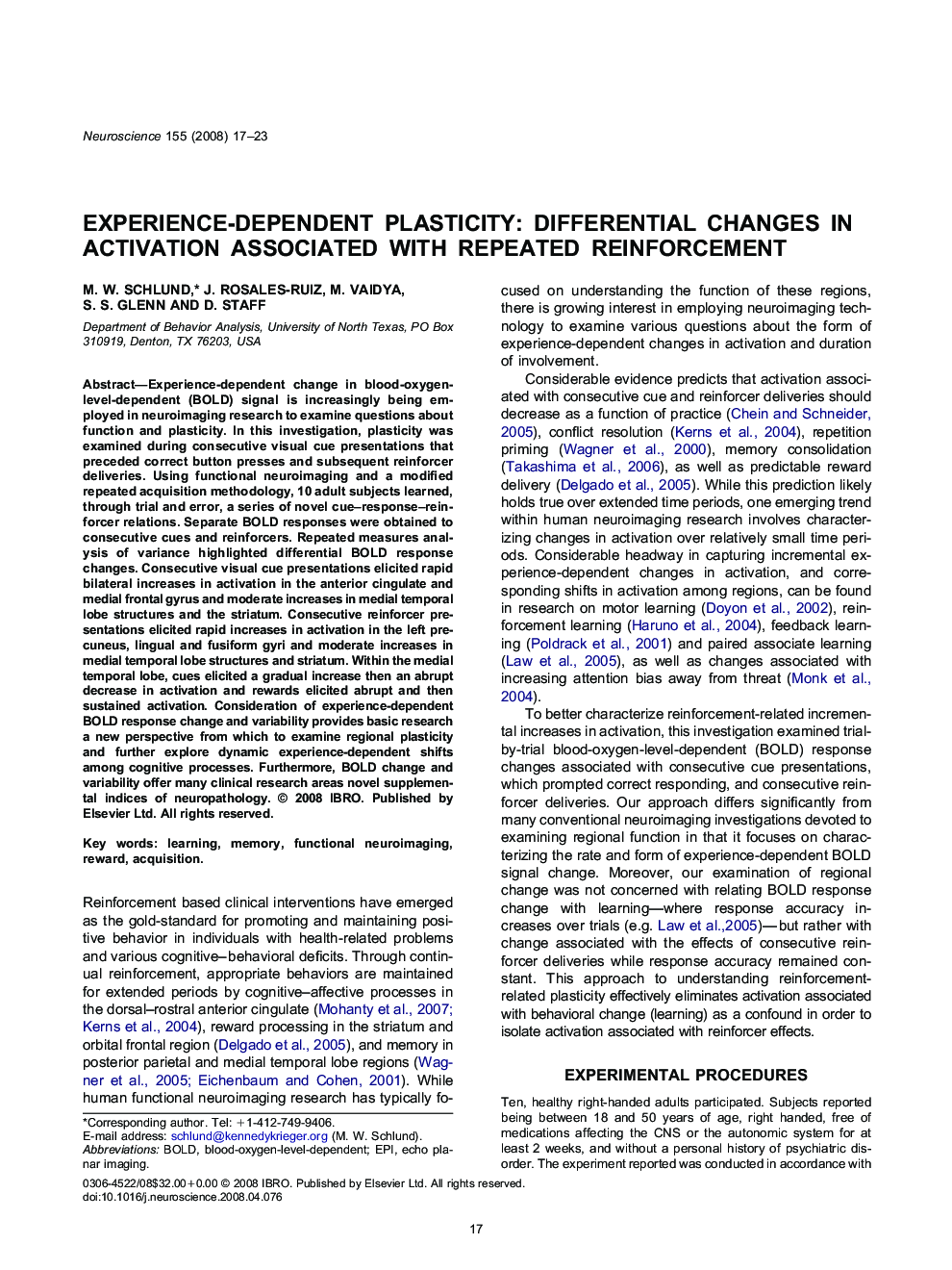| Article ID | Journal | Published Year | Pages | File Type |
|---|---|---|---|---|
| 4340474 | Neuroscience | 2008 | 7 Pages |
Abstract
Experience-dependent change in blood-oxygen-level-dependent (BOLD) signal is increasingly being employed in neuroimaging research to examine questions about function and plasticity. In this investigation, plasticity was examined during consecutive visual cue presentations that preceded correct button presses and subsequent reinforcer deliveries. Using functional neuroimaging and a modified repeated acquisition methodology, 10 adult subjects learned, through trial and error, a series of novel cue-response-reinforcer relations. Separate BOLD responses were obtained to consecutive cues and reinforcers. Repeated measures analysis of variance highlighted differential BOLD response changes. Consecutive visual cue presentations elicited rapid bilateral increases in activation in the anterior cingulate and medial frontal gyrus and moderate increases in medial temporal lobe structures and the striatum. Consecutive reinforcer presentations elicited rapid increases in activation in the left precuneus, lingual and fusiform gyri and moderate increases in medial temporal lobe structures and striatum. Within the medial temporal lobe, cues elicited a gradual increase then an abrupt decrease in activation and rewards elicited abrupt and then sustained activation. Consideration of experience-dependent BOLD response change and variability provides basic research a new perspective from which to examine regional plasticity and further explore dynamic experience-dependent shifts among cognitive processes. Furthermore, BOLD change and variability offer many clinical research areas novel supplemental indices of neuropathology.
Keywords
Related Topics
Life Sciences
Neuroscience
Neuroscience (General)
Authors
M.W. Schlund, J. Rosales-Ruiz, M. Vaidya, S.S. Glenn, D. Staff,
